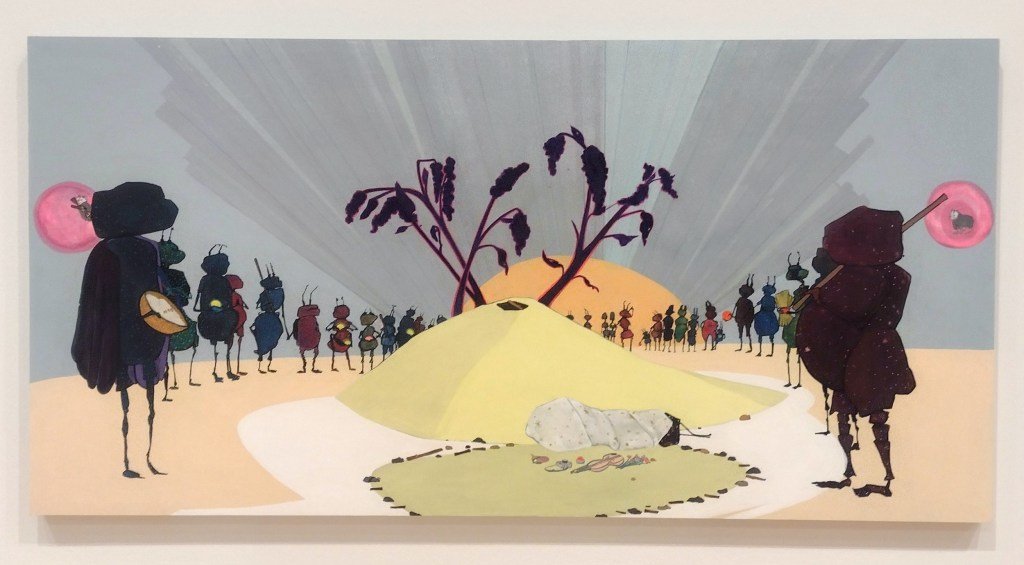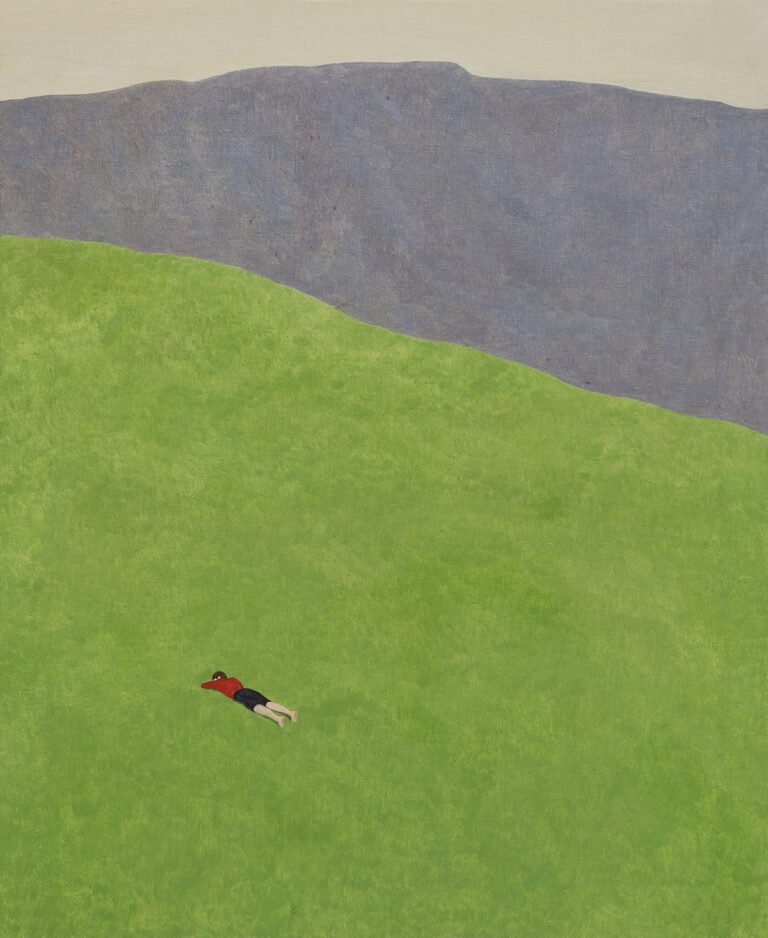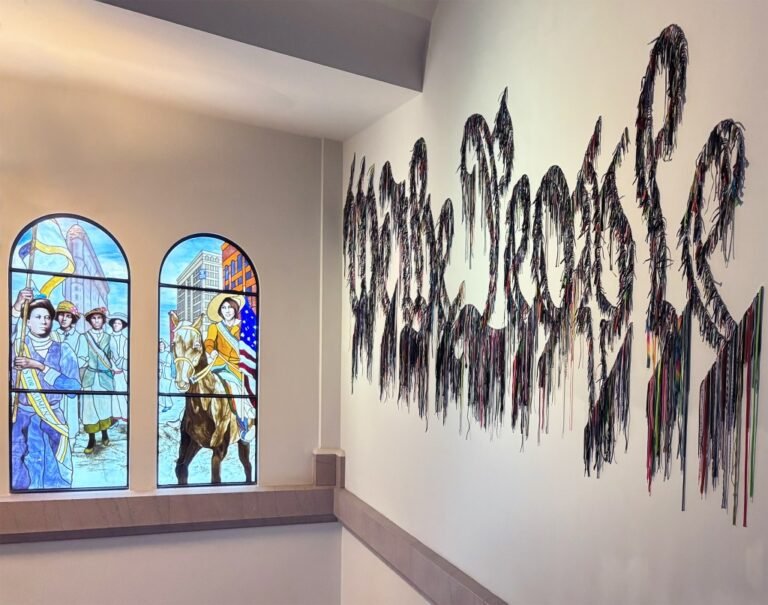

AUSTIN — Nora Naranjo Morse and Eliza Naranjo Morse: Lifelong at the Blanton Museum of Art is part of In Creative Harmony: Three Artistic Partnerships, a larger project at the museum that looks at the relationships between three artist pairs: the Nanranjo Morse mother and daughter duo, Arshile Gorky and Isamu Noguchi, and José Guadalupe Posada and Artemio Rodríguez.
Nora and Eliza belong to a Tewa-speaking Pueblo community known as Kha’p’o in Northern New Mexico. Their generational ties to this community inform how they make their art and their lives — which are, arguably, one and the same. Nora identifies these connections as “the principle place of being Pueblo people.” The two have collaborated previously, for instance, on the installation Seeking Life (2019) in Redwood City, California, but Lifelong marks their first “immersive” collaborative effort, an effect made possible by the difference in scale and materials of each artist. Eliza’s painted scenes of animal and insect domains surround viewers as they walk among larger-than-(human) life figurative soft sculptures. Additionally, a new series of prints highlights a lifelong collaborative “pass it” game between the two artists, in which they passed drawings back and forth over time, building on each other’s prompts.

One element I appreciate in Eliza’s 2024 series of paintings is the central viewer positioning she employs. For example, when I look at “Light from Love” and “Heard,” I share the same perspective as the flying creatures. From this aerial view, I can see the other travelers, the colorful shadows they cast, and the bundles of tools, maps, and supplies they carry on their backs. I imagine that I must be carrying some kind of rucksack, too, and it’s up to me to understand what tools I have, what role I play, and what difference I can make — even if I’m not quite sure where we’re headed.
In “When the Sun Sets Differently,” I find myself amid another group. This time I’m one of dozens of insects standing in a circle at sundown around a large ant hill (the massive ant hills in New Mexico are something to behold). Some of my comrades cradle glowing orbs, while others hold hands. At first glance, the scene appears peaceful, but the longer I look, the more I wonder if something ominous is afoot. Are the insects paused in awe at the everyday miracle of the sun, or are they on alert for something coming over the horizon? The bloody domestic forest scene in “With a Gun” confirms for me that Eliza isn’t interested in creating saccharine storyboards, but rather presenting complex and sometimes brutal narratives that merge ancestry, lived experiences, and future imaginings.

In the center of the gallery are Nora’s We Come with Stories (2024), a new series of the works in clay for which she is well known. Her work took a multimedia turn around 2020 when she began repurposing materials she found on the rez such as wire, plastic bags, and burlap sacks used to transport green chile peppers. The Healers from Some Other Place series (2020–24) was created as part of a larger intergenerational collaborative project called Gather that explored environmental and cultural issues. The colorful large-scale seated and reclining figurative burlap sculptures that resulted from the project, together with We Come with Stories, seem to watch over the events and characters in Eliza’s pieces from their own unique perspectives, evidenced by their casual gestures. Their adornments, patterned coverings, and the toy-like objects they hold made me start to question my own story that I, along with the other people in the gallery, somehow complete the narrative as we move between a world of animals and a land of giants.




Nora Naranjo Morse and Eliza Naranjo Morse: Lifelong continues at the Blanton Museum of Art, the University of Texas at Austin (200 East Martin Luther King Jr. Boulevard, Austin, Texas) through July 20. The exhibition was curated by Hannah Klemm.
Editor’s note: Travel and accommodations were provided by the Blanton Museum of Art in connection with the exhibition.






